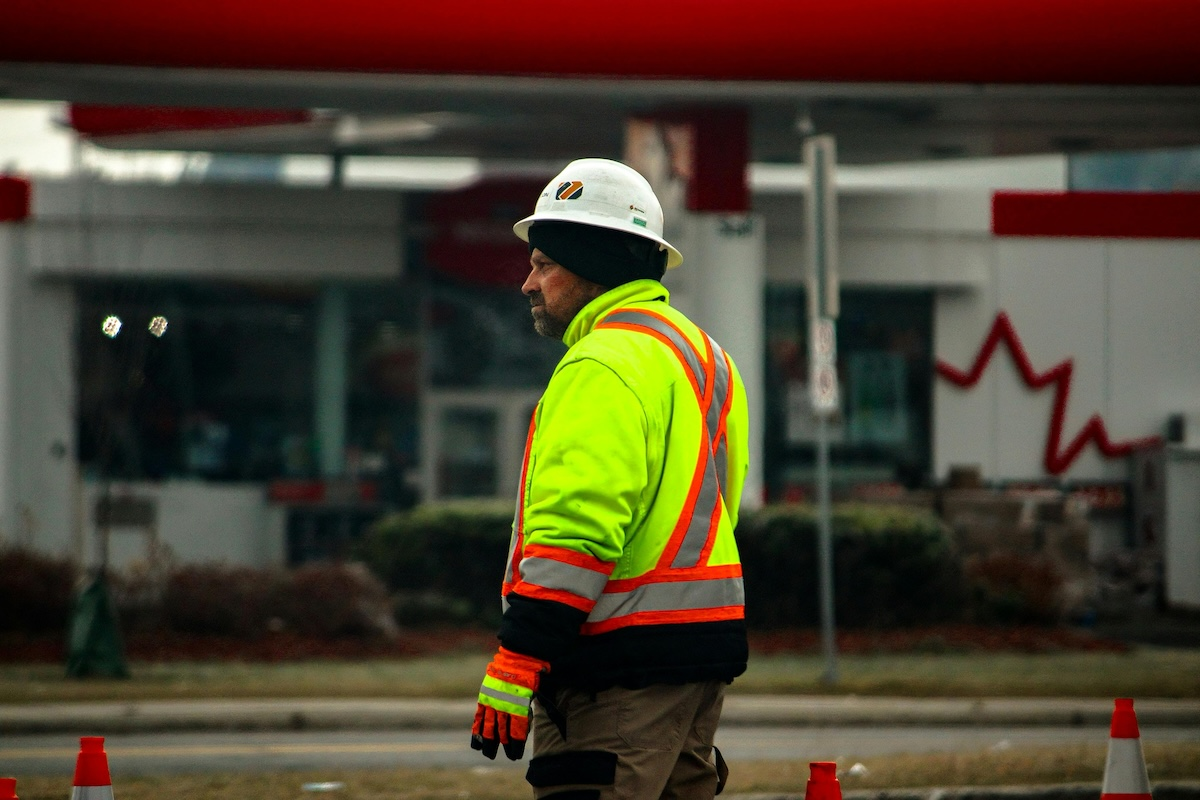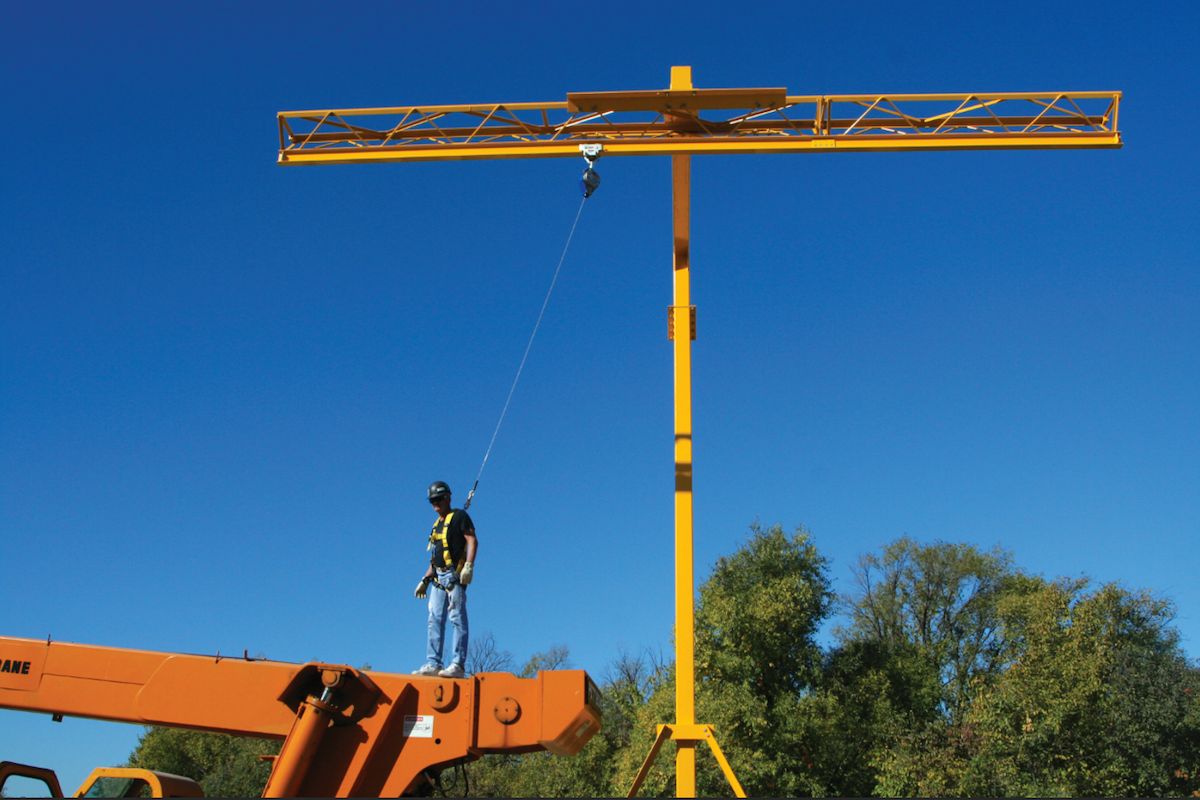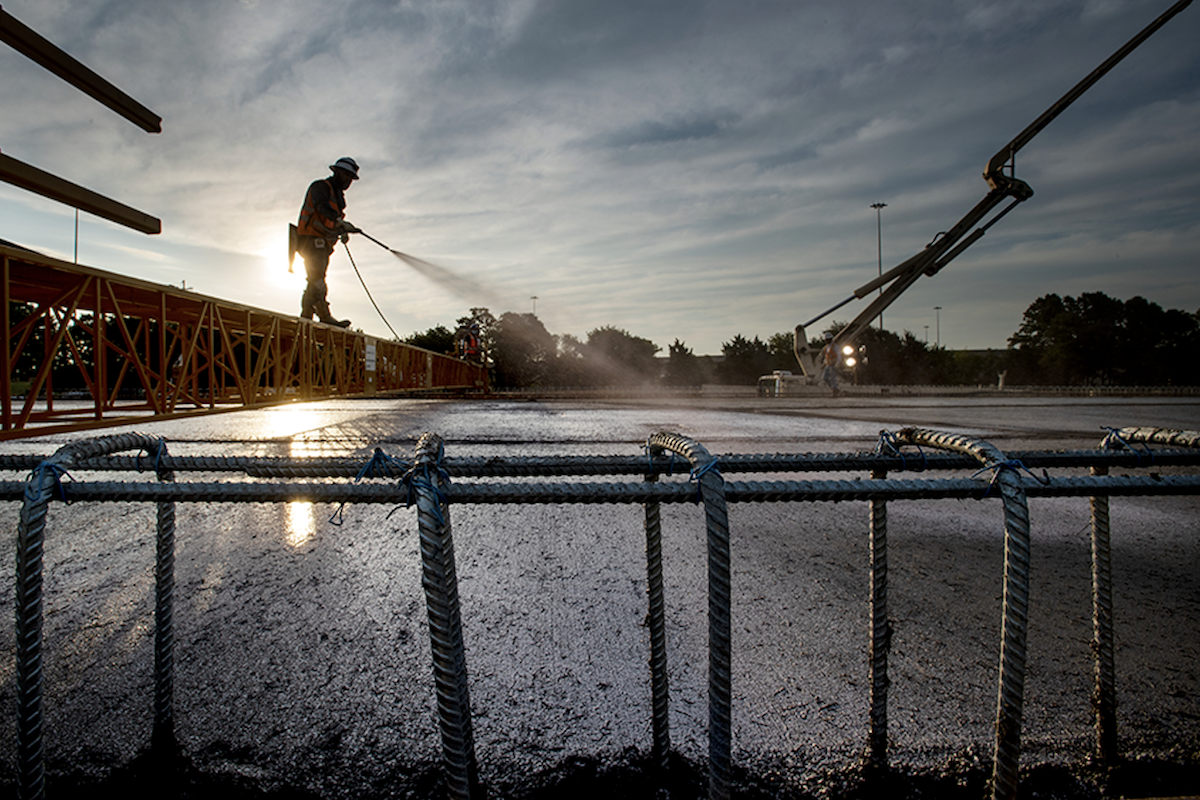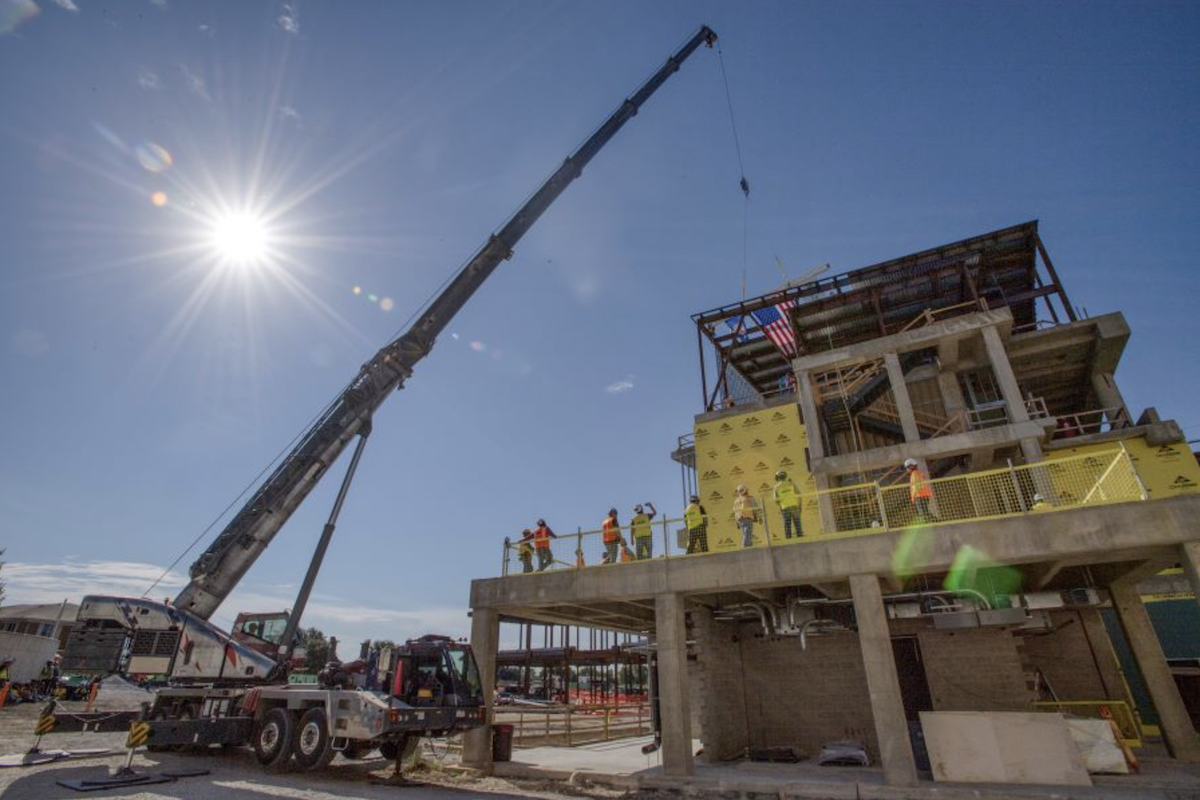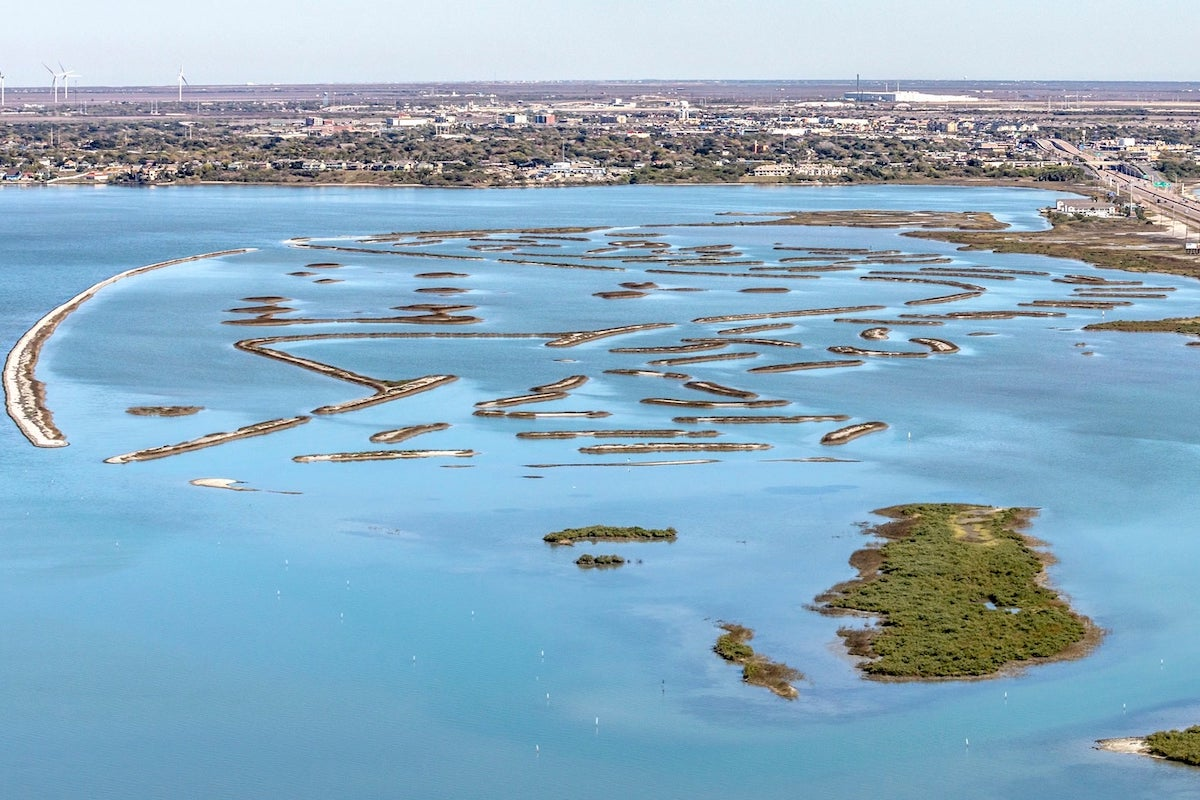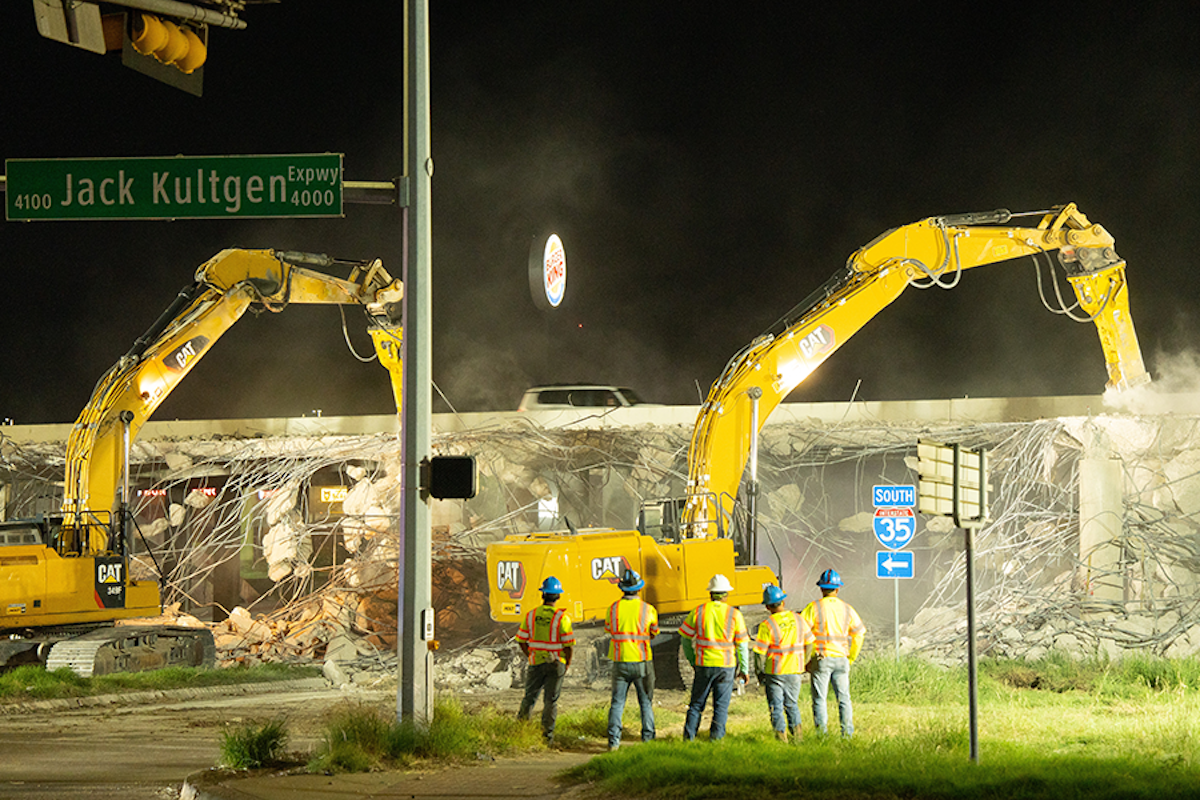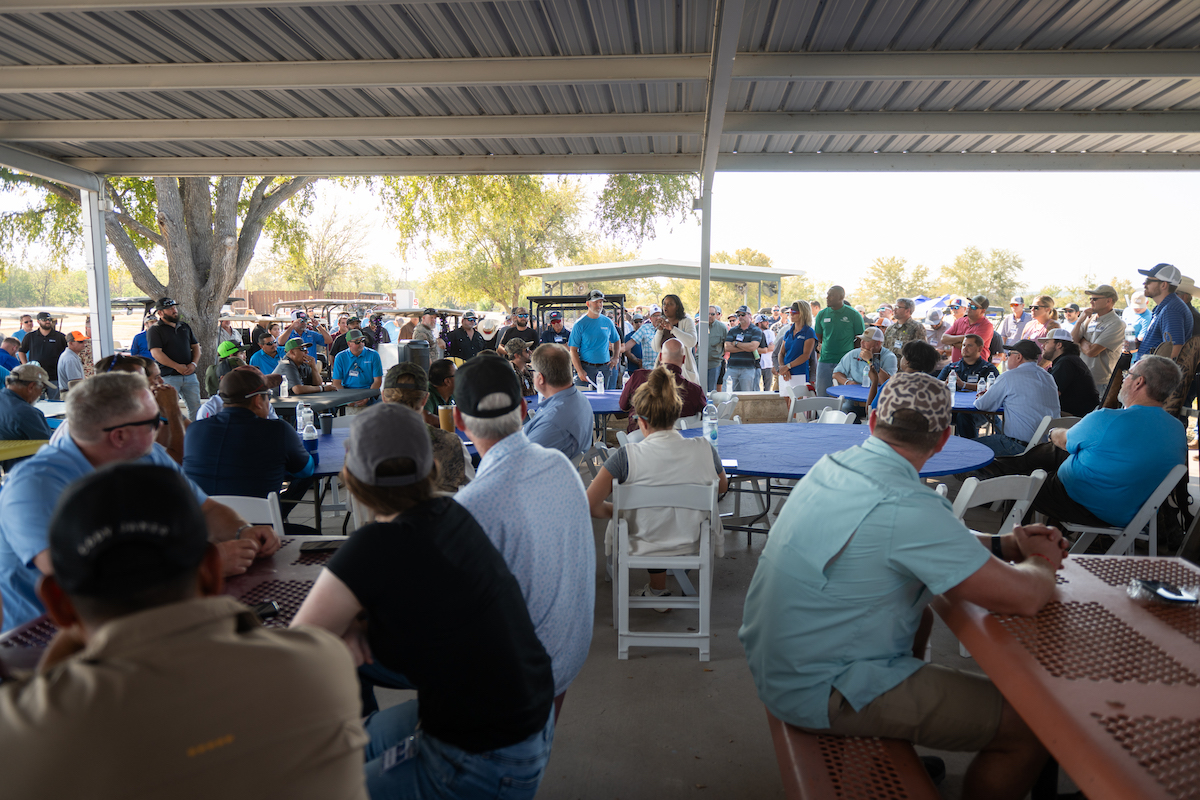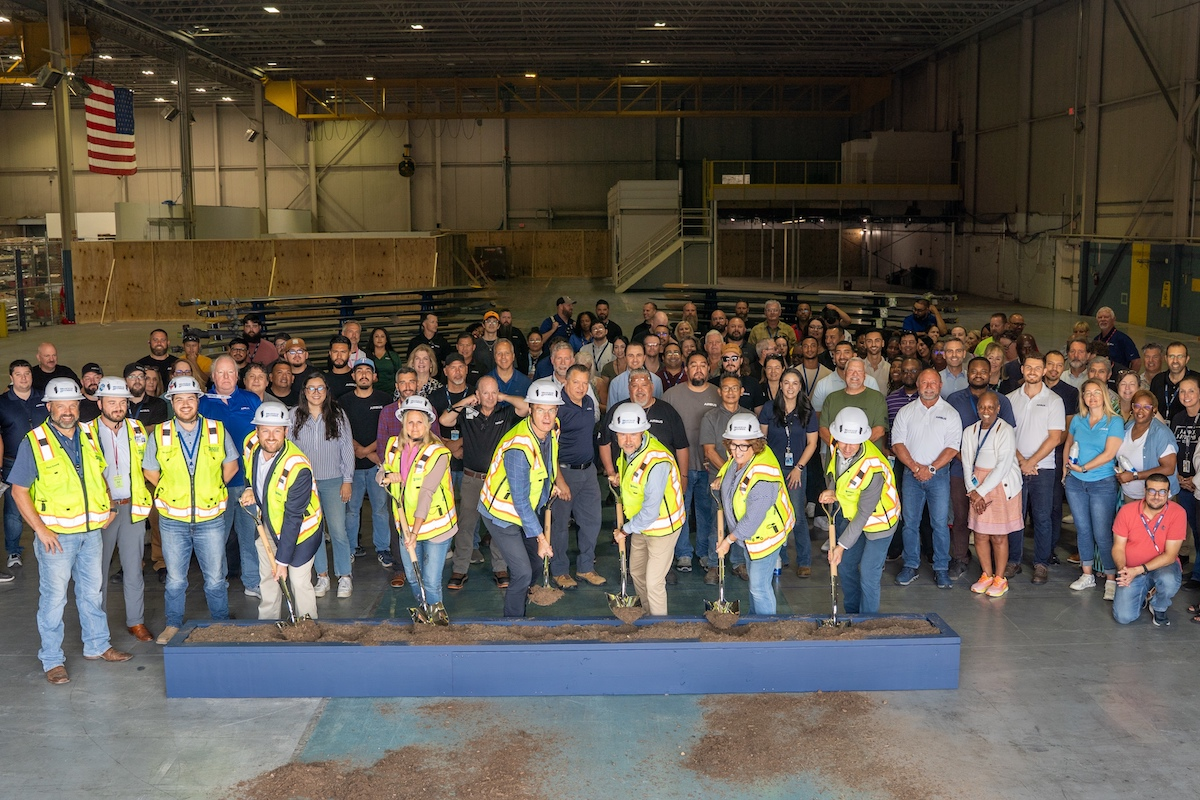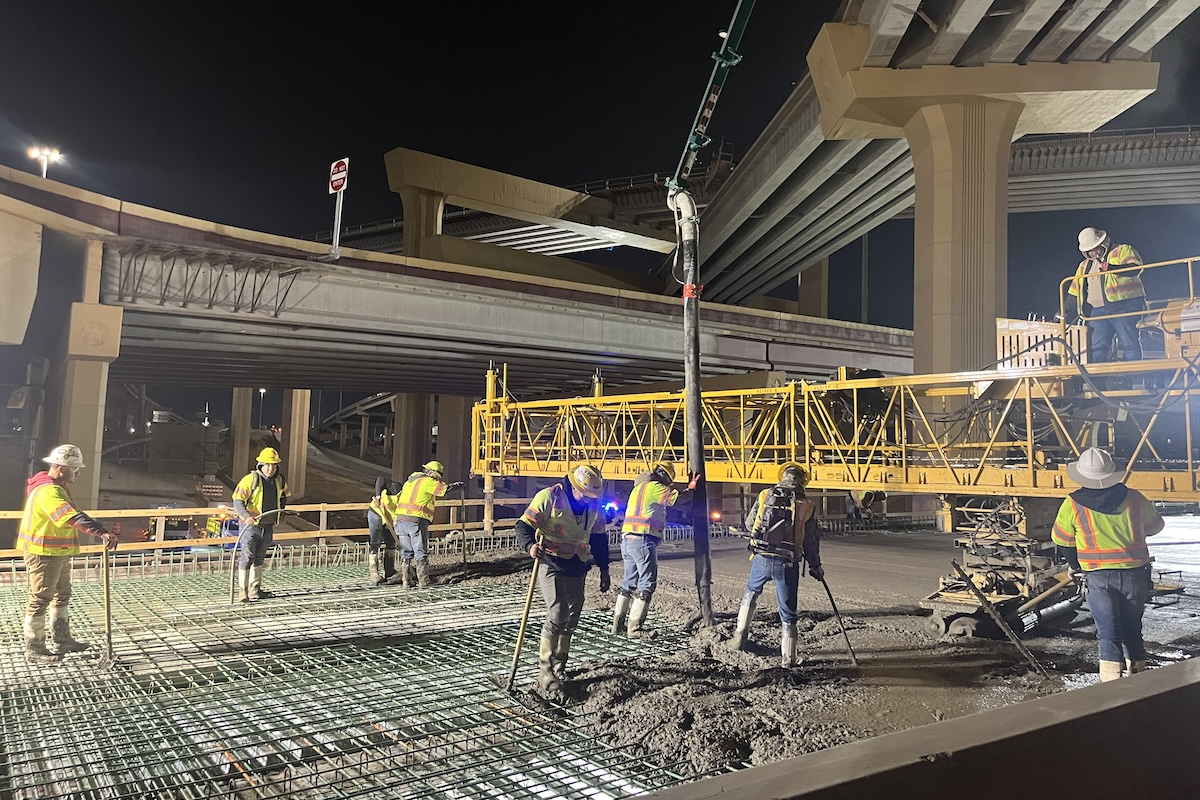During construction, however, General Contractor Main Lane Industries, Ltd., of Houston, Texas, originally needed to maintain two-way vehicular traffic for more than two years of work. Then COVID-19 and stay-at-home orders hit. With significantly lower traffic volumes, Main Lane extended their work area and finished the project five months ahead of schedule.
The $21.5 million project reduced the number of vehicular travel lanes on Bagby Street from four to two (one in each direction), with turn lanes at key intersections. That created additional space for multimodal mobility, landscaping, art, lighting, and aesthetic improvements. Wide pedestrian paths run parallel to both sides of the roadway, and the east side features a two-lane, raised cycle track.
“Houston has quite a few on-street bike facilities, but Bagby is the first of its type in the city with bicycle facilities located behind the curb, landscape, and utility buffer,” said Lonnie Hoogeboom, DRA’s Director of Planning, Design, and Development. “It gives a higher level of comfort and safety to cyclists because they’re separated from motorists.”
The DRA funded the Bagby Street reconstruction project with tax increment reinvestment zone dollars. They awarded the construction contract to Main Lane in November 2019. Work started in January 2020 and finished in October 2021, ahead of the scheduled March 2022 completion date.

| Your local Wirtgen America dealer |
|---|
| Kirby-Smith Machinery |
| Nueces Power Equipment |
“A majority of the buildings along the corridor are civic, public, and governmental facilities, so they bring quite a bit of pedestrian activity,” Hoogeboom said.
The project’s footprint includes Houston’s City Hall and City Hall Annex, central library, multiple parks, and the Hobby Center for Performing Arts. An old fire station was converted to the Aquarium restaurant and the former U.S. Postal Service building was recently transformed into a 16-acre entertainment venue. Bayou Place, formerly the city’s convention center, now houses theaters, bars, and restaurants. The second and third levels of the three-block-long entertainment venue bridge over Bagby Street.
Because of those overhead structures, “We didn’t do a lot of heavy excavator work under Bayou Place,” said Brian Manning, P.E., Main Lane’s CEO and Project Manager. “Instead, we used smaller equipment and did a lot of hand work. In addition, the DRA chose not to do as much street work there, knowing that historic bridge features and joints would come into play if we replaced all that infrastructure.”
Along with upgrading the storm sewer and drainage system, the project re-waterproofed five underground tunnel connectors to prevent flooding. Those tunnels created complexities for roadway work.
“The challenge was exposing the tunnels, then getting enough clearance over the top of them to place a full section of roadway,” Manning said. “We didn’t have that option between City Hall and City Hall Annex, so we went with a thinner set pavement that’s fiber reinforced, as opposed to traditional rebar and thicker concrete.”

| Your local Komatsu America Corp dealer |
|---|
| Kirby-Smith Machinery |
| WPI |
For the rest of the roadway, “Because the speed of the project was paramount, the DRA elected to go with high early strength concrete,” Manning said. “That allowed for earlier use by traffic.”
In spring 2020, “Office occupancy dropped and the Hobby Center and Aquarium restaurant closed,” Manning said. “With reduced traffic volumes, we were able to shut down lanes that previously couldn’t be shut down.”
Bagby is one of the few two-way streets in downtown. Originally, Main Lane’s contract required two-way traffic along the entire corridor, with shifted lanes to accommodate construction. After traffic volume dropped, Main Lane was allowed to switch to one-way traffic.
“When we only had one lane of traffic and didn’t need to maintain traffic lights in both directions, it expanded the working area,” Manning said. “The additional lane was typically just 11 feet, but that’s a lot of real estate when you’re talking downtown construction.”
Main Lane completed the northern half of the project in September 2021, which allowed Bayou Place and the Aquarium restaurant to return to normal operations.

| Your local Broce Broom dealer |
|---|
| Nueces Power Equipment |
“There was much more utility infrastructure in the southern half, so we were able to advance the northern half into its final configuration quicker,” Manning said. In addition, “When restaurants and public spaces closed during the pandemic, knowing when they would open back up dictated what we focused on.”
In the first few months of work, Main Lane accommodated numerous parades and other scheduled events. “We placed temporary material on the road so people – even horses sometimes – could easily pass through the alignment,” Manning said.
Once COVID-19 hit, most of the scheduled events didn’t occur, so work continued with fewer interruptions. However, in early June 2020, after the killing of George Floyd, Main Lane received a couple days’ notice of upcoming demonstrations. They mobilized quickly.
“Where we had crushed materials in the road, we covered that with 2 to 3 inches of sand,” Manning said. “We were laying quite a few bricks, so we palletized those and moved them. We were working on several blocks at the time, so we rolled our equipment and materials further away from City Hall.”
More than 60,000 people joined the march, with the conclusion of the route on the construction site. The Houston protests lasted a few days.

| Your local Atlas Copco CMT USA dealer |
|---|
| Bee Equipment Sales Ltd |
| Closner Equipment Co Inc |
| Cooper Equipment Co |
| Central Texas Equipment |
“Those were uncertain times,” Manning said. “We had to shift our focus from construction activities to public safety.”
“Our landscape consultant, SWA Group of Houston, proposed a structural soil system to support strong root growth and anchoring of the trees in what’s a fairly windy corridor,” Hoogeboom explained. “The soil mix contains biological nutrients and some larger aggregates that create air pockets for water absorption and allow the roots to cling to the gravel pieces. Because the road and sidewalk and their concrete assembly restricts the water and soil conditions, the primary branching system of the roots will be longitudinal, rather than spreading outward in a more circular fashion.”
To get the right soil mix, Main Lane obtained 1,770 cubic yards of structural soil from a source in Oklahoma. “It came on trailers because it was such a high volume,” Manning said. “We avoided peak traffic hours, but with limited right-of-way, bringing those truckloads downtown and placing the material without impacting traffic – that was the real challenge.”
During the corridor’s grand opening in late November 2021, those trees played a prominent role.
“By May 2021 we knew we’d be ahead of schedule, so we worked with Main Lane to get the project done in time for a holiday event,” Hoogeboom said.

| Your local Case Construction Equipment Inc dealer |
|---|
| Nueces Power Equipment |
| ASCO Equipment |
That event included lights wrapped around all the new trees, as well as six large-scale light installations and festivities to bring the public out and show off the new walkable corridor.
- Owner – Downtown Redevelopment Authority/Tax Increment Reinvestment Zone No. 3, Houston, Texas; Allen Douglas, Executive Director; Lonnie Hoogeboom, Director of Planning, Design, and Development; Brett DeBord, Director of Capital Projects and Maintenance
- Engineer – Jones & Carter, Bellaire, Texas; Kristin Landry, P.E., Senior Project Manager
- Architect – SWA Group, Houston, Texas; Rhett Rentrop, Principal
- Design Consultants – CSF Consulting, LP, Houston, Texas; Gandy2 Lighting Design, Houston, Texas
- General Contractor – Main Lane Industries, Ltd., Houston, Texas; Brian Manning, P.E., CEO and Project Manager; Thomas Seltz, Project Coordinator; Brandon Browning, Superintendent
- Subcontractors – Pfeiffer & Son, Ltd., LaPorte, Texas; Mike Smith, Project Manager; Landscape Art, League City, Texas; Rebecca Dubiski, Project Manager; NBG Constructors, Houston, Texas; Tyler Emmerson, Project Manager; Gulf Coast Pavers, Houston, Texas; Ben Krenzer, Project Manager
Photos courtesy of Multivista
















